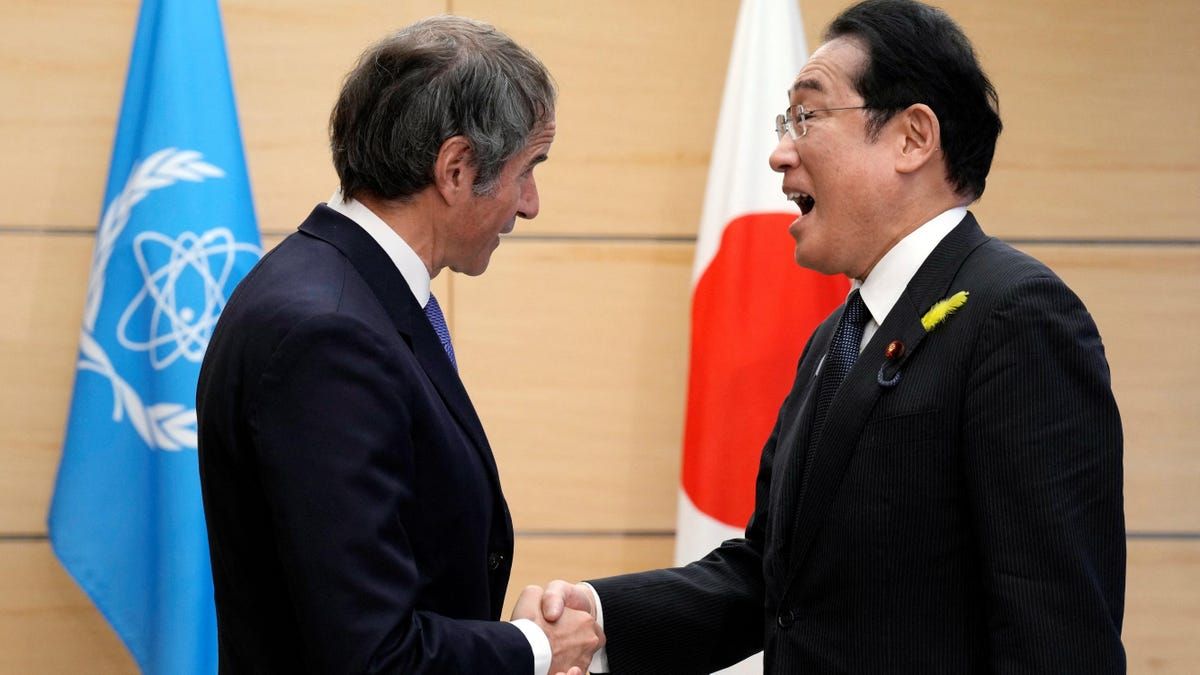The UN is letting Japan discharge Fukushima water into the sea
Japan is preparing to release more than a million cubic meters of treated wastewater from the tsunami-hit Fukushima nuclear plant into the Pacific ocean—and the international oversight body for atomic power approves.
After a two-year review, the International Atomic Energy Agency (IAEA) has concluded that Japan’s plans are consistent with its safety standards and “would have a negligible radiological impact to people and the environment.” But some of Japan’s neighbors are unhappy with the proposal. The Pacific is “not Japan’s private sewer,” a Chinese foreign ministry spokesperson complained in June.
Advertisement
Japan says the wastewater will first be treated through an Advanced Liquid Processing System to remove almost all radioactive material aside from tritium, a heavy isotope of hydrogen. Before discharging it into the ocean, Japan will dilute the water to bring the tritium levels below regulatory standards.
The IAEA’s safety review will continue during the release of the water, with both a continuous on-site presence and live online monitoring on its website.
Advertisement Advertisement
A brief timeline of Japan’s plans for Fukushima wastewater
March 2011: A tsunami triggered by a magnitude 9.0 earthquake floods three reactors of the Fukushima Daiichi Nuclear Power Plant. It is deemed a level 7 nuclear incident, putting it in the same bracket as Chernobyl. The irradiated water, used to cool the reactors in the plant, has to be stored in hundreds of steel tanks that are bolted and sealed with resin for at least five years, buying operators time to decide how to dispose of the water.
Advertisement
August 2013: The tanks aren’t foolproof. Roughly 300 tons of highly radioactive water leaks from one of the tanks at Fukushima, according to the Tokyo Electric Power Company (Tepco), the plant’s operator.
2019: Operators of the Fukushima plant warn that they will run out of storage space for the contaminated water in three years.
Advertisement
April 2021: The Japanese government publishes a policy on how it wants to manage this water: by discharging it gradually into the sea after chemically treating it.
2021-2023: An IAEA task force, which includes international experts from Argentina, Australia, Canada, China, France, Republic of Korea, the Marshall Islands, Russia, the United States, the United Kingdom, and Vietnam, inspects the Fukushima facility’s water discharge system more than five times, studying hundreds of pages of documents and publishing six technical reports.
Advertisement
May 2023: Tepco predicts that Fukushima’s tanks will reach their full capacity between February and June 2024.
May 10, 2023: Japan’s Nuclear Regulation Authority (NRA) formally approves the discharge plan.
Advertisement
July 4, 2023: The IAEA deems Japan’s wastewater plan to be safe.
The salt-fish quandary
🎣 Locally, fishing communities, which have been disgruntled about not being consulted on the wastewater plans, are firmly opposed to an ocean release. However well treated, they fear, the irradiated water may contaminate their catch—and even if it doesn’t, public fears around tainted seafood will damage their livelihoods.
Advertisement
🧂 South Koreans have been rushing to stockpile salt over the last week, sending prices up by 27%. They’re concerned about what the wastewater disposal will do to the sea, and by extension to sea salt, both in terms of supply and prices.
By the digits: Japan’s nuclear wastewater disposal
1.25 million tons: The volume of treated wastewater that Japan plans to release into the sea
Advertisement
1,000+: The number of tanks holding the wastewater, which started being treated in 2013
22 trillion becquerels: Tepco’s annual cap on the amount of radioactivity from the tritium released in the wastewater, which was also the national annual standard for wastewater releases before the accident. A becquerel is a unit of radioactivity
Advertisement
12 becquerels: The amount of radioactivity from an average-sized banana
40 years: How long the total release of all the wastewater could take
Charted: Japan says tritium is routinely released into the ocean
Advertisement
Quotable: China is against Japan’s waste water disposal plan
“Simply for saving cost, Japan has insisted on discharging the nuclear-contaminated water into the sea, in disregard of the concerns and opposition from the international community, and taken the Pacific Ocean as its ‘sewer.’ No matter what the report says, it will not change the fact that Japan will release millions of tonnes of Fukushima nuclear-contaminated water into the Pacific Ocean in the next three decades. Will Japan’s purification facility be effective in the long-term? Can the international community be...informed when the discharged water exceeds the discharge limit? What impact will the long-term accumulation and concentration of radionuclides bring to the marine environment, food safety, and people’s health? These are the questions that the IAEA report failed to answer.” —A spokesperson for China’s ministry of foreign affairs
Related Topics
⚡ Japan’s energy crisis is boosting backing for nuclear power a decade after Fukushima
Advertisement
✊ The UN says Japan may be violating human rights by returning families to Fukushima
🇻🇳 After decontamination trials in Fukushima, Japan will try to scrub Agent Orange from Vietnam
Source: Quartz


